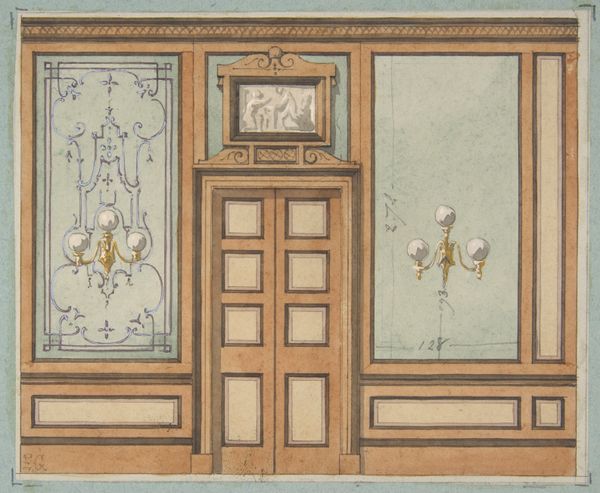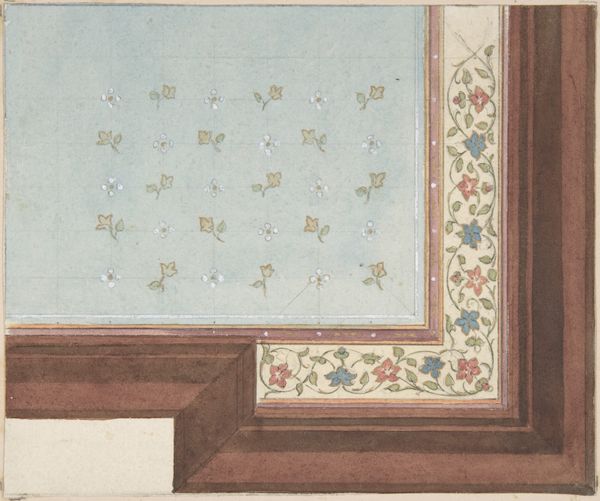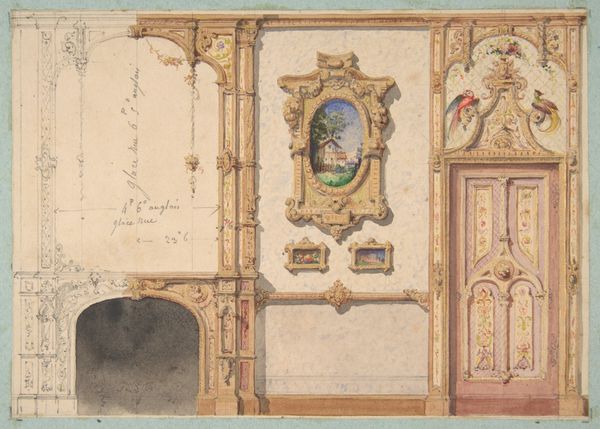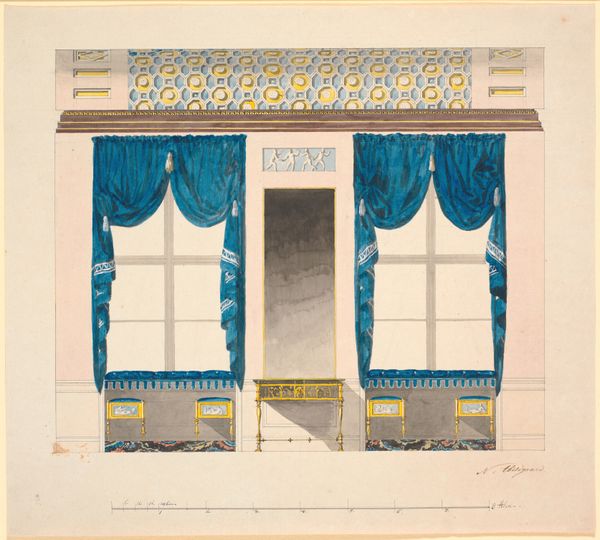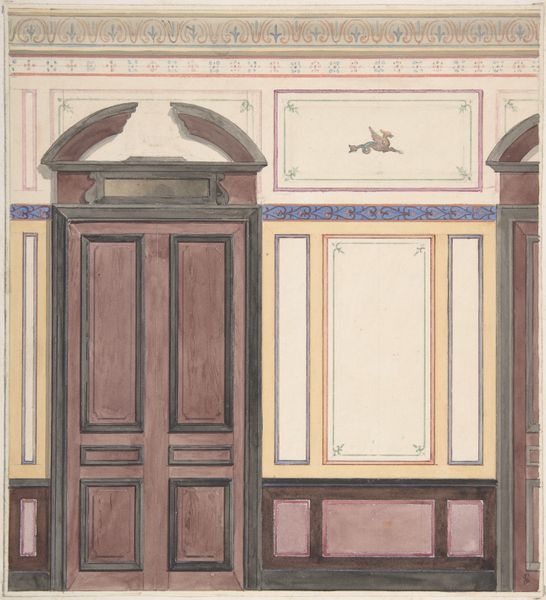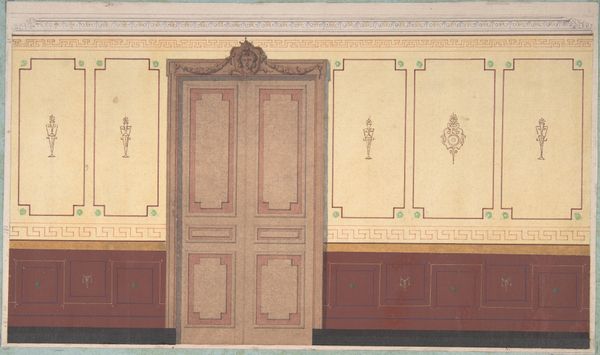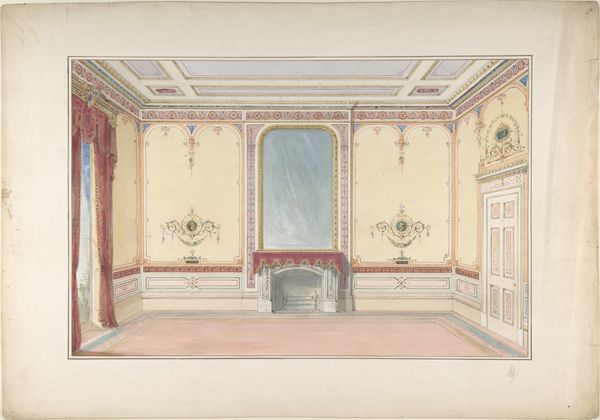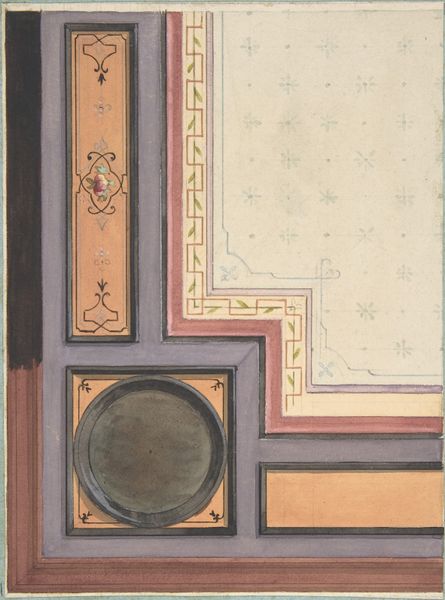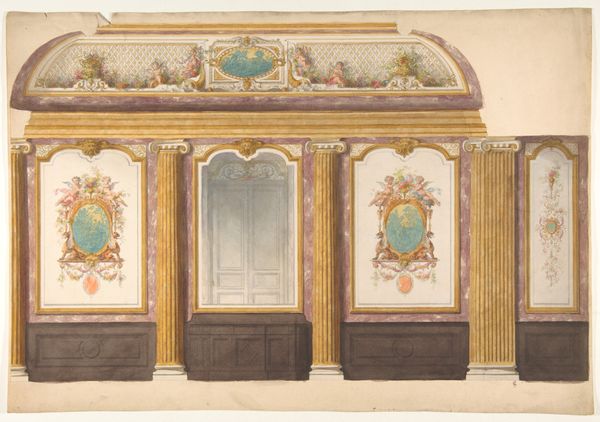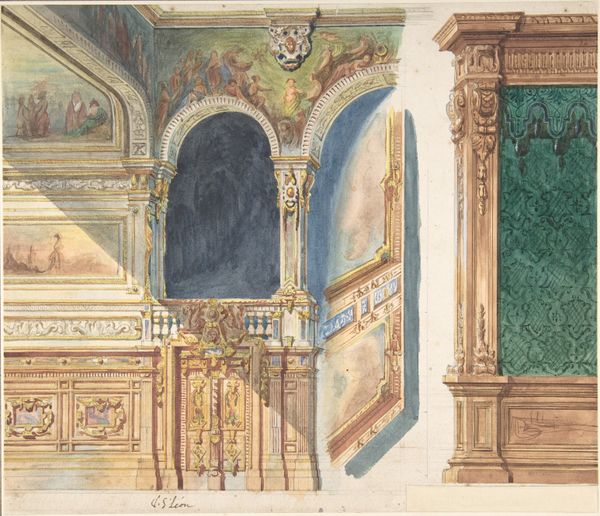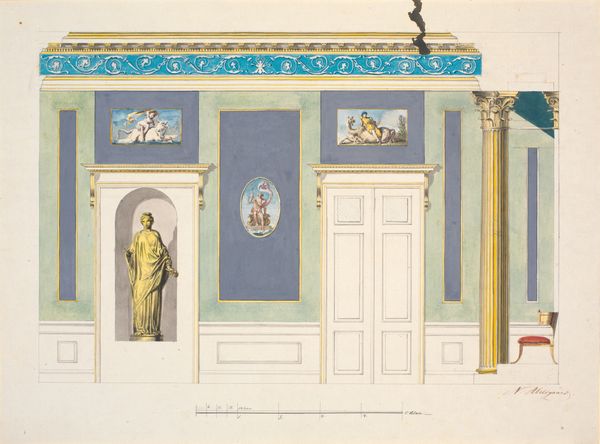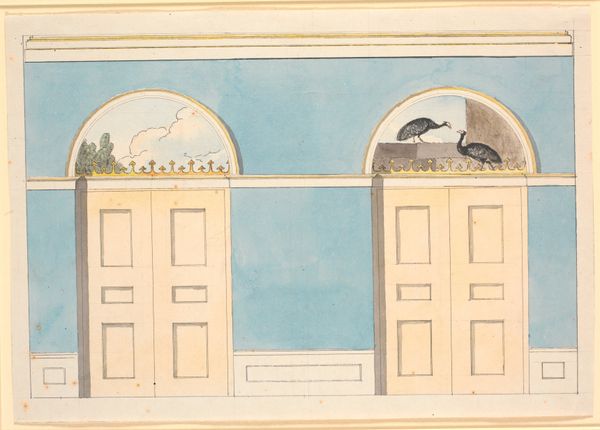
Pompeiian Design for Doorway and Wall with Curtain (possibly for Deepdene, Dorking, Surrey) 1850 - 1900
0:00
0:00
Dimensions: 8 1/4 x 10 in. (21.0 x 25.4 cm)
Copyright: Public Domain
Curator: This watercolor drawing from between 1850 and 1900, by Jules-Edmond-Charles Lachaise, is titled "Pompeiian Design for Doorway and Wall with Curtain," and it's believed it was possibly a design for Deepdene, in Surrey. Editor: Oh, isn't it calming? The gentle colors, the soft light… I can almost feel a cool breeze wafting through those sheer curtains. It’s like stumbling upon a secret garden in a dream. Curator: Yes, and notice how Lachaise meticulously renders the classical architectural elements. The symmetry, the proportion… it all speaks to the enduring influence of antiquity, particularly the Neoclassical movement. Editor: It feels less academic than it sounds though. More lived in, like a beautiful set design after the actors have gone home. And that glimpse into the next room with the statue! Is it a real room or just another trompe l’oeil? It teases your imagination, doesn’t it? Curator: Absolutely. These kinds of architectural drawings served not just as documentation, but also as a form of cultural commentary. They embody Victorian England's fascination with and reimagining of the past. This wasn’t merely copying Pompeii, but filtering it through a specific 19th-century lens—informed by social ideals and aesthetic preferences of the time. Editor: Which makes you wonder what that preference *was*? Privacy? Seclusion? Maybe an escape from the bustling cities, a need to conjure a tranquil, ancient world within the walls of Deepdene. It’s more than just decoration, it's aspiration in watercolor. Curator: Precisely. This design operates on several layers simultaneously. On one hand, there’s this visual construction of an ideal space. Yet on the other, it highlights the way cultural artifacts are selectively interpreted to align with dominant ideologies of power. Who gets to define "beauty" or "classicism", and whose stories are being told or erased in that process? Editor: Good question. I was just seeing light and shadow, the promise of a cool drink, the whisper of fabric… now you've made me wonder about what stories these walls are *hiding*, as well as what they're meant to display. Art history! It ruins everything, wonderfully. Curator: That's precisely the point, isn't it? Art should always inspire both sensory enjoyment and critical thought. Editor: I’ll never look at a curtain the same way again! Thanks a lot.
Comments
No comments
Be the first to comment and join the conversation on the ultimate creative platform.
